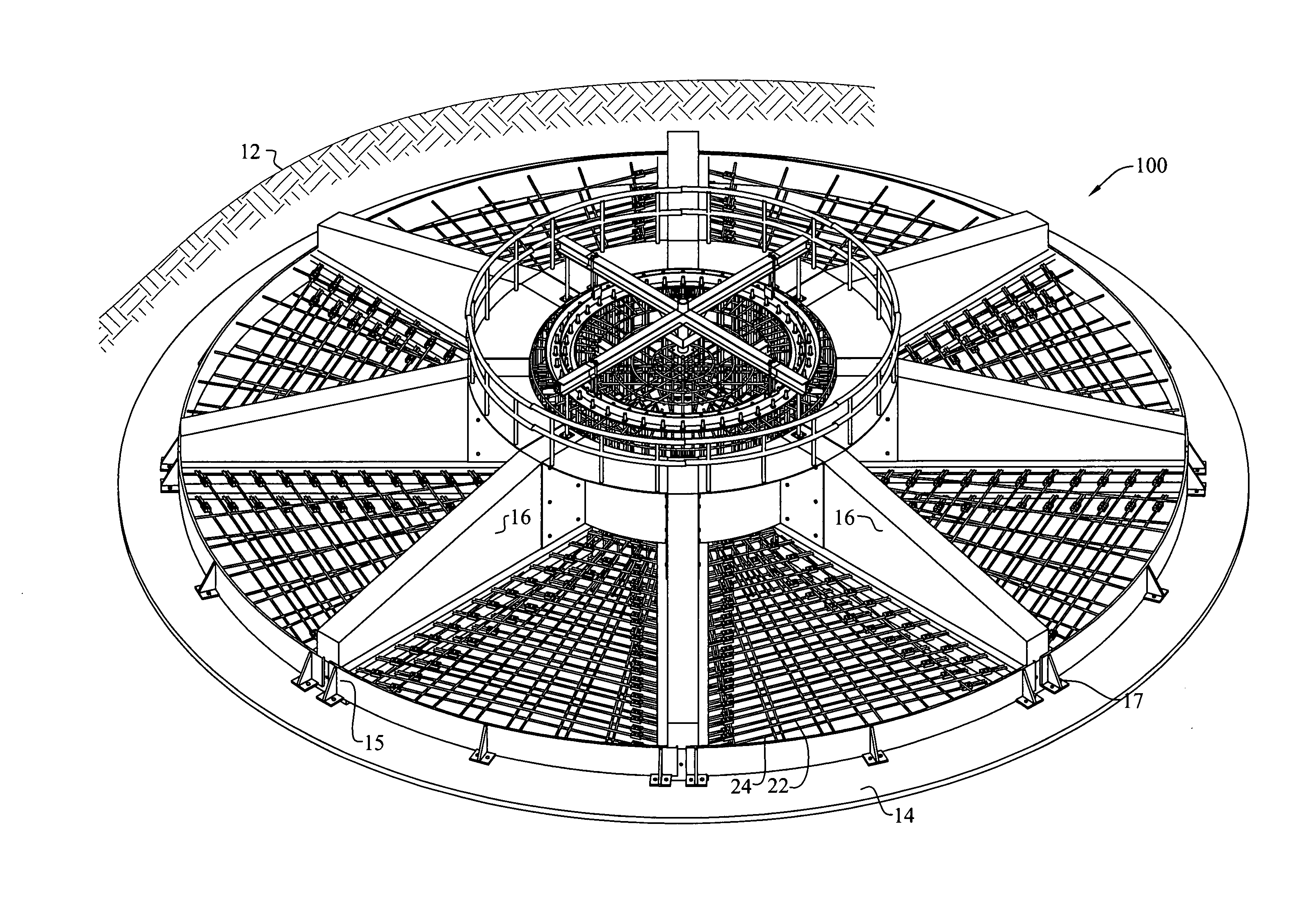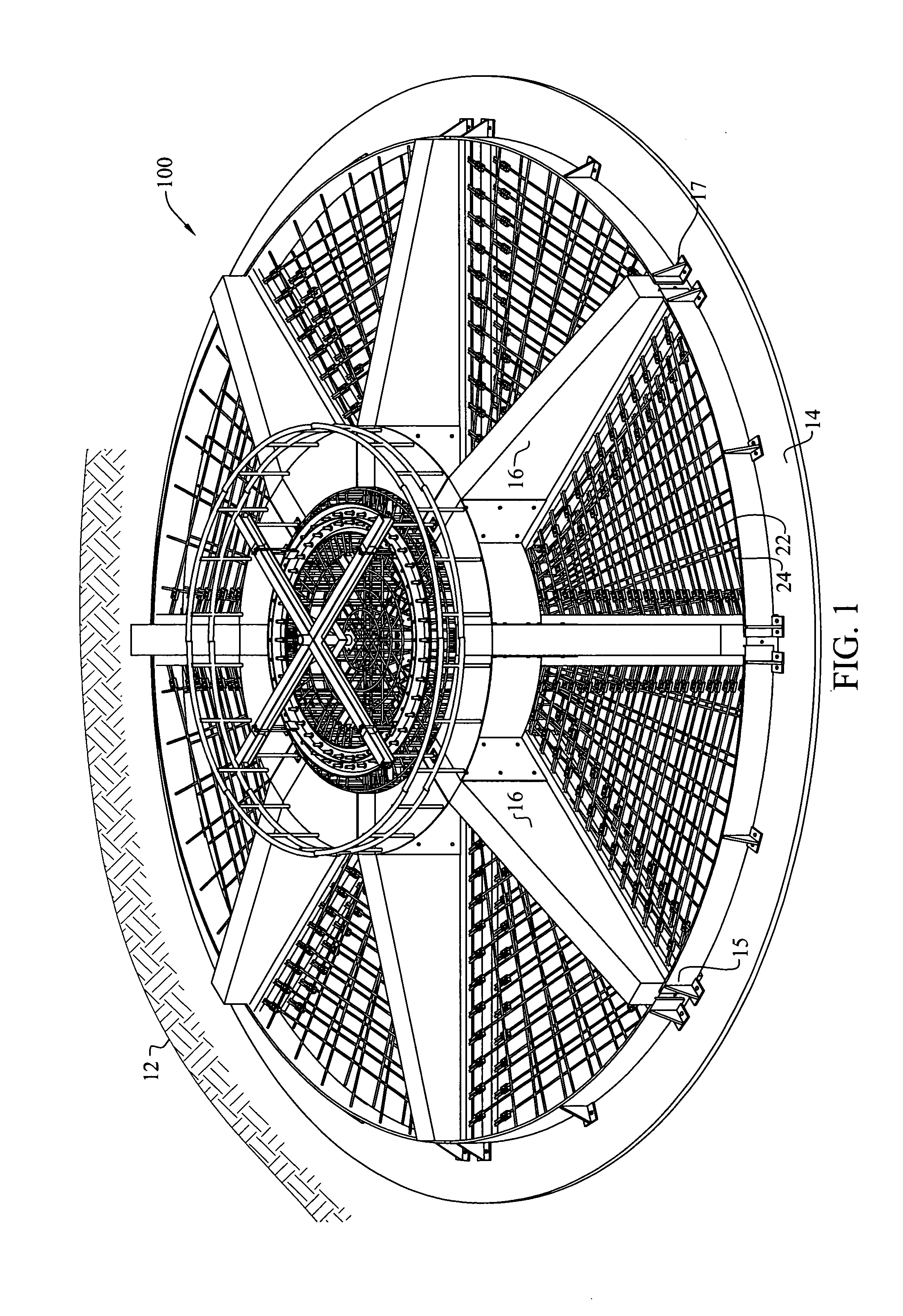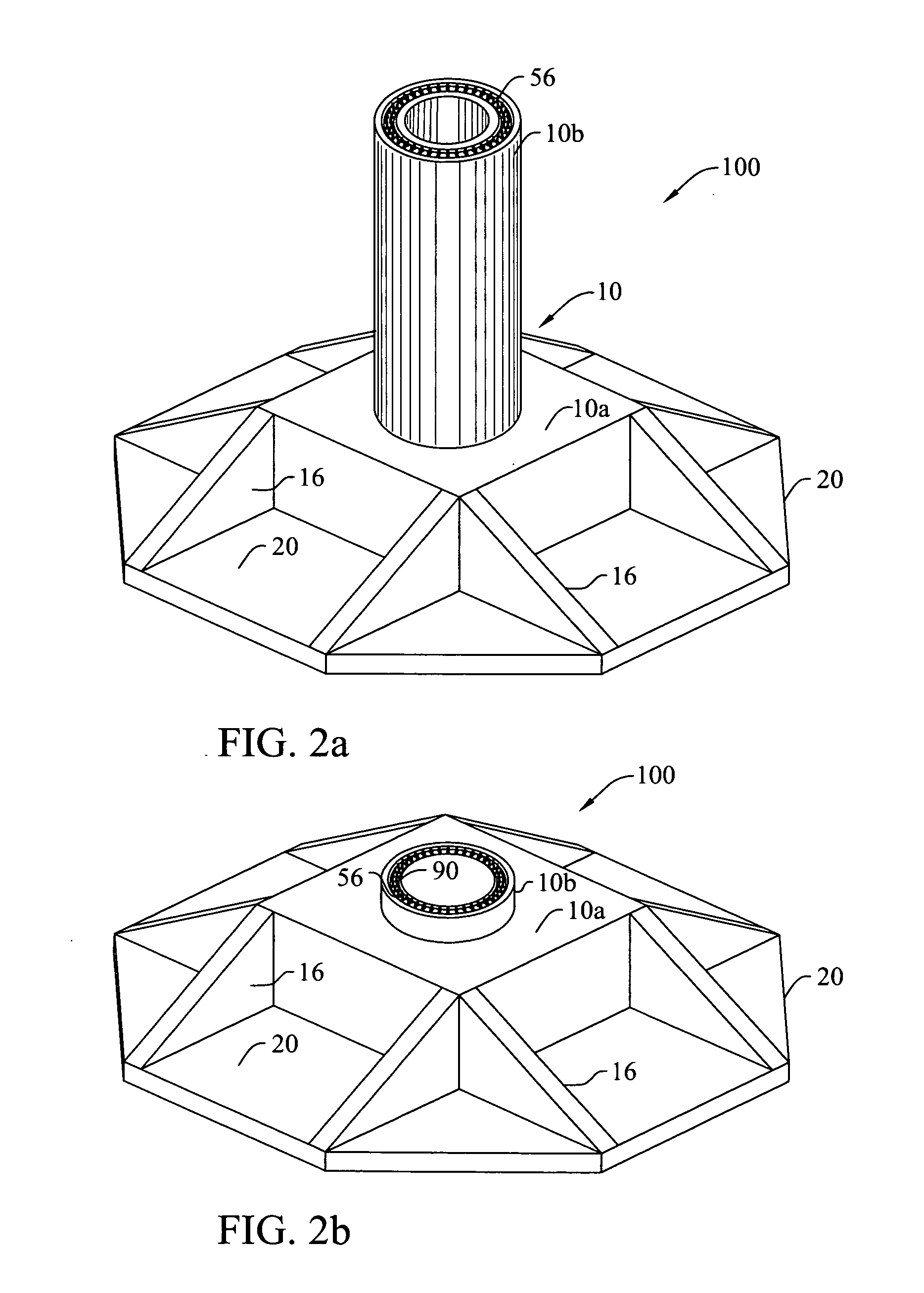Fatigue reistant foundation system
a foundation system and fatigue resistance technology, applied in sustainable buildings, machines/engines, final product manufacturing, etc., can solve the problems of high risk of thermal cracking, and compromise the structural integrity of the foundation, so as to reduce construction materials and labor cost-effective
- Summary
- Abstract
- Description
- Claims
- Application Information
AI Technical Summary
Benefits of technology
Problems solved by technology
Method used
Image
Examples
Embodiment Construction
[0098]The present invention pertains to a wind turbine foundation for wind turbines. The foundation comprises a plurality of components, namely a central vertical pedestal, a substantially horizontal bottom support slab, and a plurality of radial reinforcing ribs extending radially outwardly from the pedestal. The ribs may be prefabricated and transported to job site, but the pedestal and support slab are poured in situ at the site out of concrete. Alternatively the ribs may be cast in situ.
[0099]The present invention pertains to a fatigue resistant foundation 100 for wind towers which comprises a plurality of components, namely a central vertical pedestal, a substantially horizontal continuous bottom support slab with a stiffened perimeter, a plurality of radial reinforcing ribs extending radially outwardly from the pedestal and a three-dimensional network 500 of vertical, horizontal, diagonal, radial and circumferential post-tensioning elements embedded in the footing that keeps a...
PUM
 Login to View More
Login to View More Abstract
Description
Claims
Application Information
 Login to View More
Login to View More - R&D
- Intellectual Property
- Life Sciences
- Materials
- Tech Scout
- Unparalleled Data Quality
- Higher Quality Content
- 60% Fewer Hallucinations
Browse by: Latest US Patents, China's latest patents, Technical Efficacy Thesaurus, Application Domain, Technology Topic, Popular Technical Reports.
© 2025 PatSnap. All rights reserved.Legal|Privacy policy|Modern Slavery Act Transparency Statement|Sitemap|About US| Contact US: help@patsnap.com



